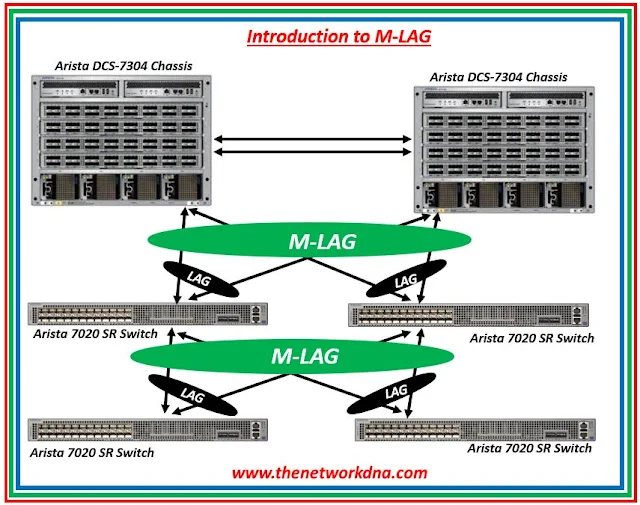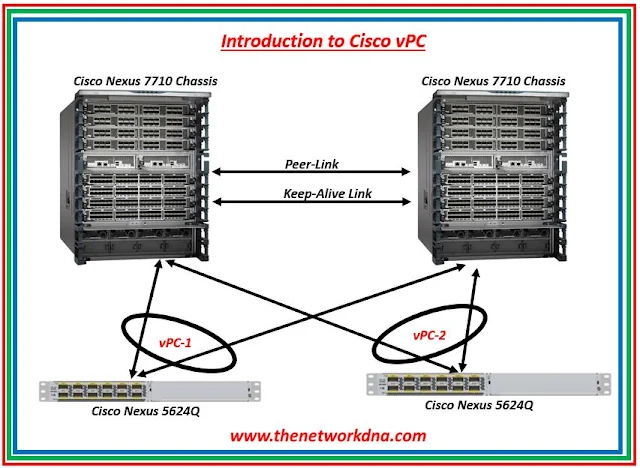MC-LAG vs Cisco vPC: What You Need to Know ?
MC-LAG vs Cisco vPC: What You Need to Know ?
The demand for more bandwidth and faster speeds continues to be driven by the widespread adoption of data center virtualization to expedite data flows.
Network experts are looking for ways to link as many networking devices as they can in order to keep up with this development. One of these is the link aggregation group (LAG), which increases the effectiveness of data transfer by combining numerous Ethernet lines into a single logical link.
MC-LAG (Multi-Chassis Link Aggregation Group) and Cisco vPC (Virtual Port-Channel) are both technologies used to provide redundancy and high availability in data center networks.
MC-LAG (Multi-Chassis Link Aggregation Group)
MC-LAG is a standard-based technology that is implemented in many vendor switches. It allows multiple switches to work together to present a single logical switch to the network. MC-LAG enables link aggregation across multiple switches, so that if one switch fails, traffic is automatically rerouted through the other switch without any disruption.
 |
| Fig 1.1- MC-LAG in Arista Networks |
Benefits of MC-LAG (Multi-Chassis Link Aggregation Group)
- LAG hashing is used to equally distribute traffic to each of the switches.
- To boost bandwidth for East and West as well as North and South, just add more links to the LAG.
- Provides stability with two control and management planes.
- Having the capacity to replace one switch at a time without impacting other devices
- By adding another MLAG to another switch, one may easily increase port capacity and add another switch either east or west.
Cisco vPC (Virtual Port-Channel)
Cisco vPC, on the other hand, is a proprietary technology developed by Cisco. It also allows multiple switches to be connected together to form a single logical switch, but it uses a different approach than MC-LAG.
In a vPC environment, two Cisco Nexus switches are connected together with a special vPC link, and the switches appear as a single logical switch to the rest of the network. This allows devices to connect to both switches simultaneously and load balance traffic across the links.
 |
| Fig 1.2- Cisco vPC |
Benefits of Cisco vPC (Virtual Port-Channel)
- Enables the usage of a Port Channel by a single device across two upstream devices.
- Removes blocked ports for the Spanning Tree Protocol and provides a loop-free topology
- Provides fast convergence if either the link or a device fails
- Provides link-level resiliency
Exploring the Pros and Cons of MC-Lag and Cisco vPC ?
👉The way MC-LAG and Cisco vPC handle control plane communication is a significant distinction. MC-LAG depends on protocols like LACP (Link Aggregation Control Protocol) and ARP (Address Resolution Protocol) to control traffic, whereas Cisco vPC synchronizes state information between the two switches using a proprietary protocol called Cisco Fabric Services (CFS).
👉MC-LAG is a standard-based technology, which means that it is supported by many vendor switches. In contrast, Cisco vPC is a Cisco proprietary technology, which means that it can only be used with Cisco Nexus switches.
👉Cisco vPC is more sophisticated than MLAG. It supports Layer 2 and Layer 3 Multipathing, allowing you to establish redundancy by providing several parallel channels between nodes and load-balancing traffic if other paths exist. You may also utilize the Multi-Active Gateway Protocol to enable Layer 3 Multipathing (MAGP).
 |
| Fig 1.3- MC-LAG vs Cisco vPC |
Summary
In summary, both MC-LAG and Cisco vPC are technologies that provide redundancy and high availability in data center networks. MC-LAG is a standard-based technology that is supported by many vendors, while Cisco vPC is a Cisco proprietary technology that is limited to use with Cisco Nexus switches.
Both technologies have their own advantages and disadvantages, and the choice between them will depend on the specific requirements of the network.
Continue Reading...
++++++++++++++++++++++++++++++++++++++++++++++++++++++++++++++
Cisco datacenter: vPC Features and purpose - The Network DNA
Cisco Datacenter: vPC ( Single and Double Sided vPC) - The Network DNA
vPC best Practice in Cisco Datacenter Environment - The Network DNA
Datacenter Scenario: Configuring vPC on Cisco Nexus Devices - The Network DNA
Introduction to Cisco Nexus vPC and Configuration - The Network DNA
vPC as DCI for Cisco ACI Spine-Leaf Architecture - The Network DNA
Introduction and Configurations of Arista MLAG - The Network DNA
++++++++++++++++++++++++++++++++++++++++++++++++++++++++++++++







